In this recipe Tim Yarzhombek shows us how he creates 3D characters by experimenting with prompts and using the results to re-train a model. Although this method won’t work for every model, it will definitely spark some new ideas for experimentation. The results are unpredictable, but when they work they’re stunning. Plus, it’s actually quite simple!
1. Using pop-culture characters to train a model is particularly effective – it’s something ai excels at – so I started by drawing these minimal but recognizable characters and fed them to a model.
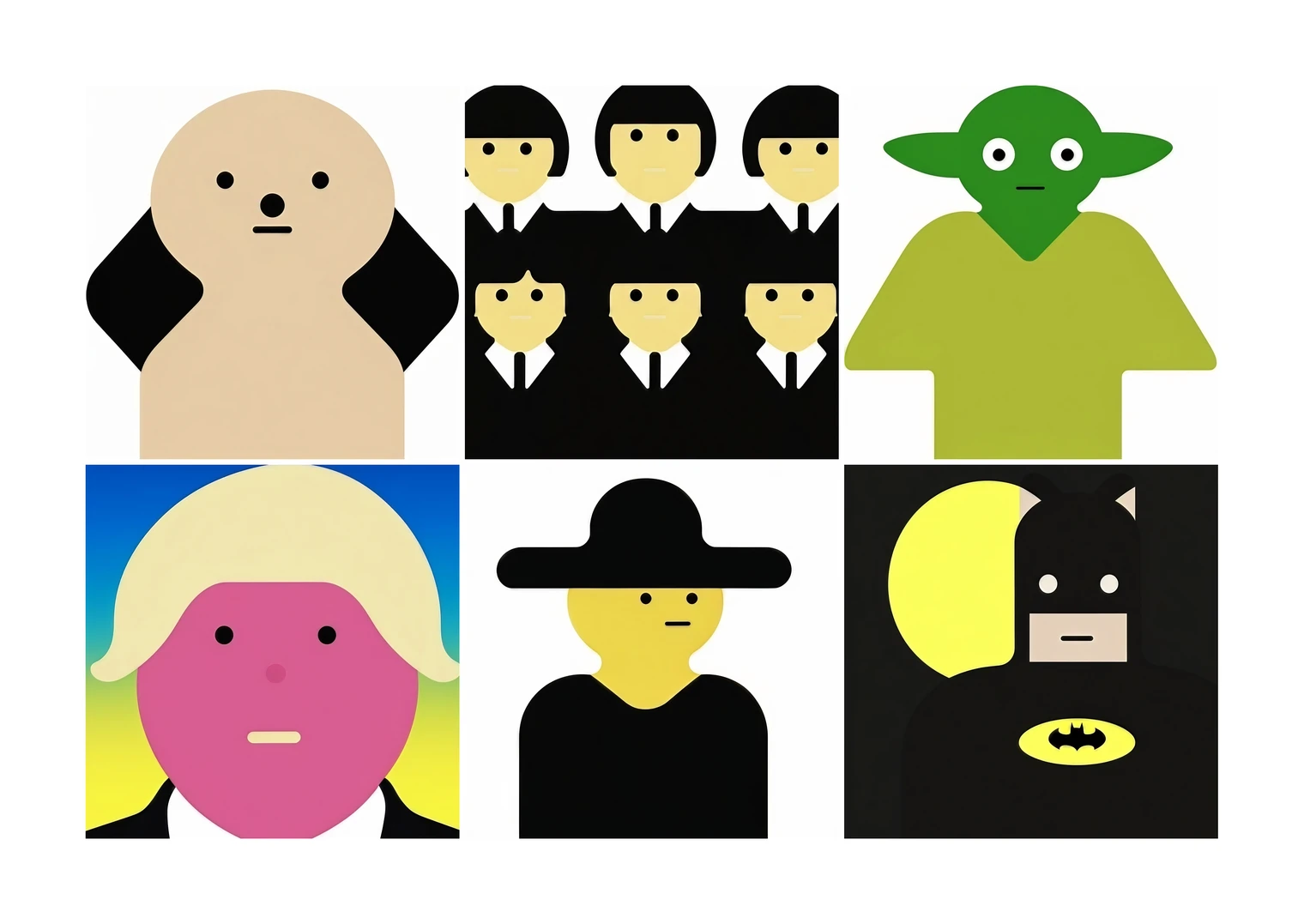
:quality(90):gifv()/uploads/34b45cc9-399b-44c5-9354-1d86958ee443.jpg)
2. While playing around with the model, I thought they would make fantastic sculptures. Through trial and error, I incorporated various words like CGI, 3D render, plastic texture into my prompts. The result was a variety of 3D characters, some in a style that aligned with design trends today.
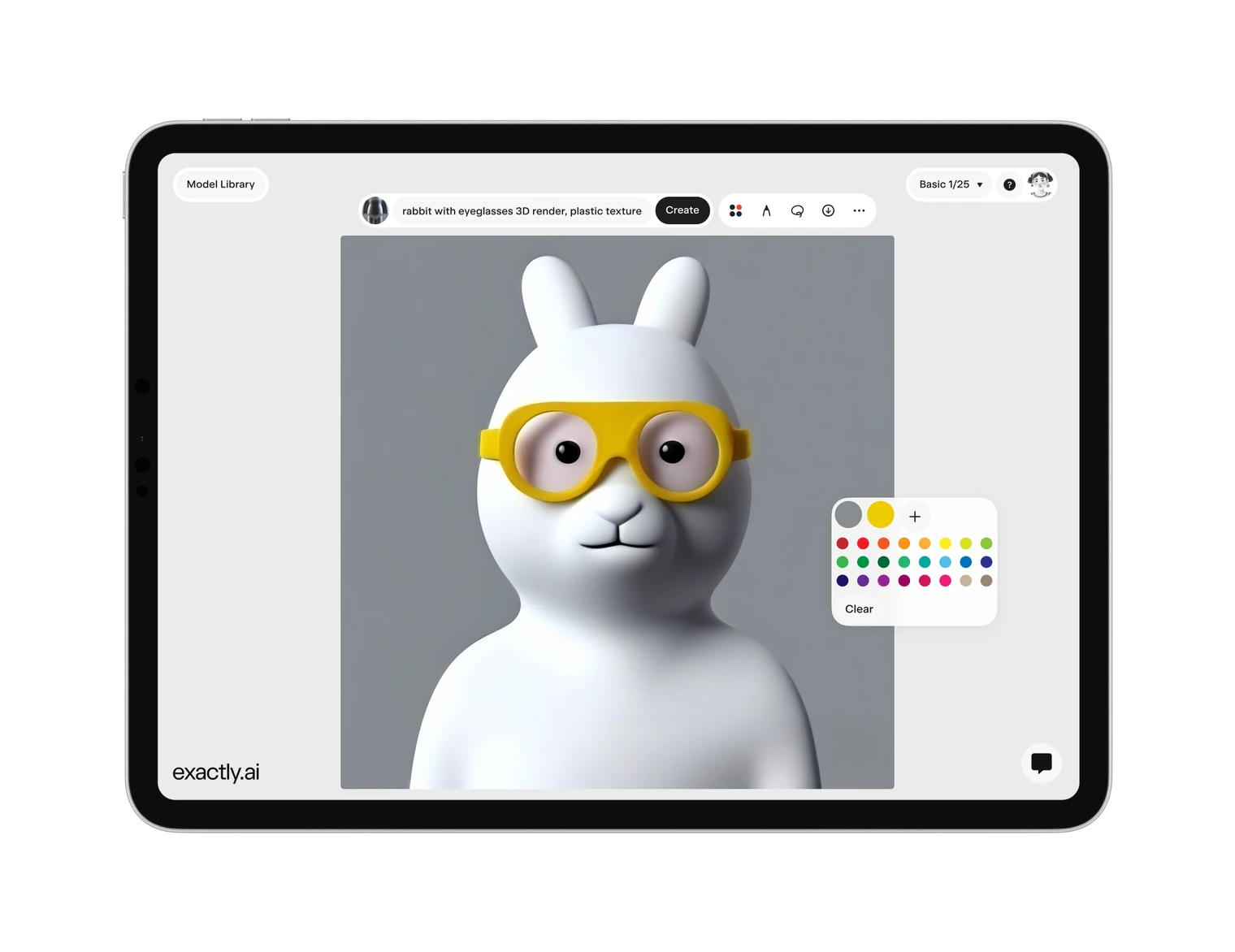
:quality(90):gifv()/uploads/85abd84f-0ffd-40ef-a1e1-b15afd89b2b2.jpg)
3. However, out of all of my generations the 3D effect I was looking for was rarely coming up. This was frustrating, so I gathered all the successful generations and trained a new model based on those.
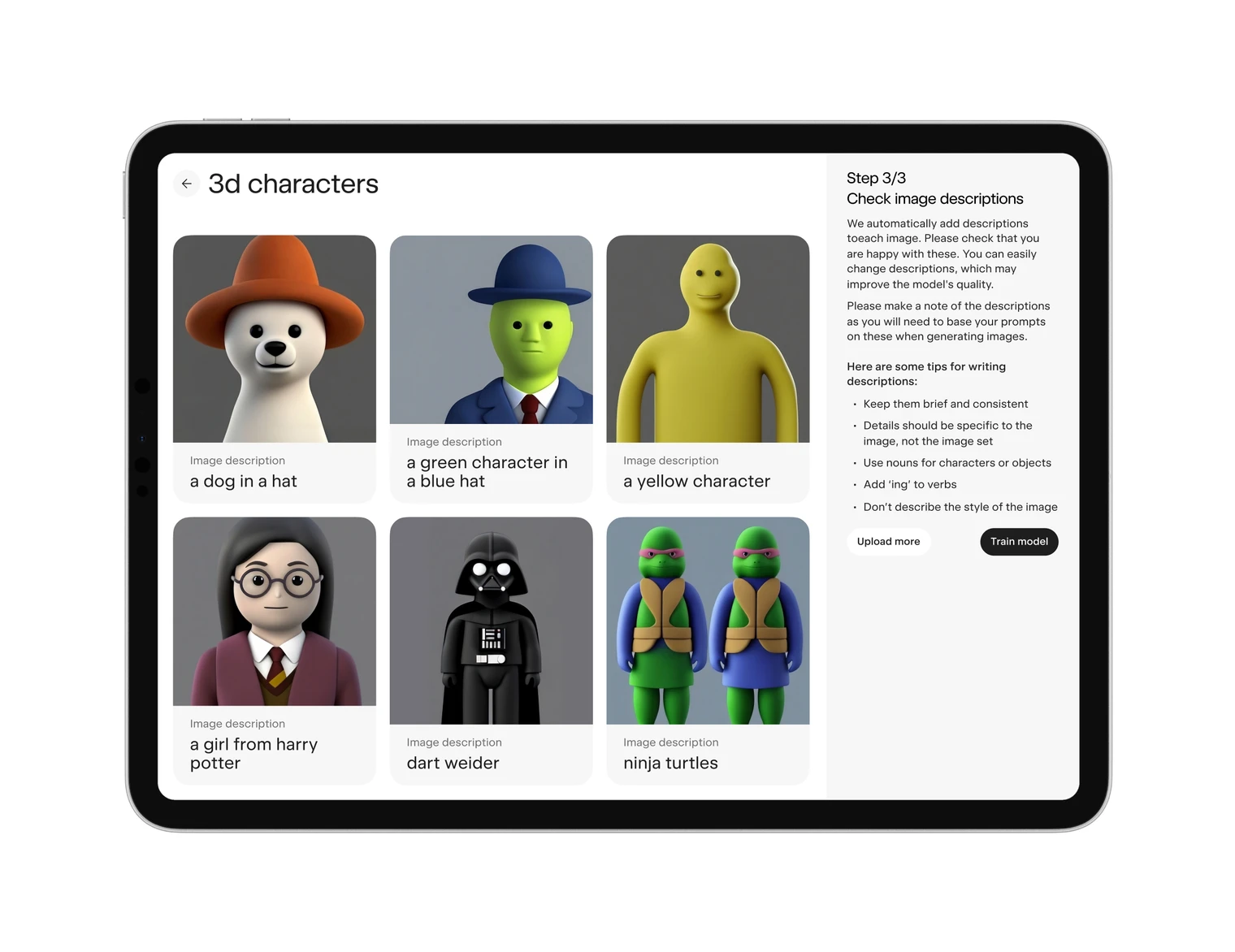
:quality(90):gifv()/uploads/93fc6bcb-aedd-411f-a5fa-3a890979d98f.jpg)
4. Adding certain materials to the prompts like '3D render' made for better results. I became curious to repeat this, so I very quickly sketched up characters that looked like they were made of sausages.
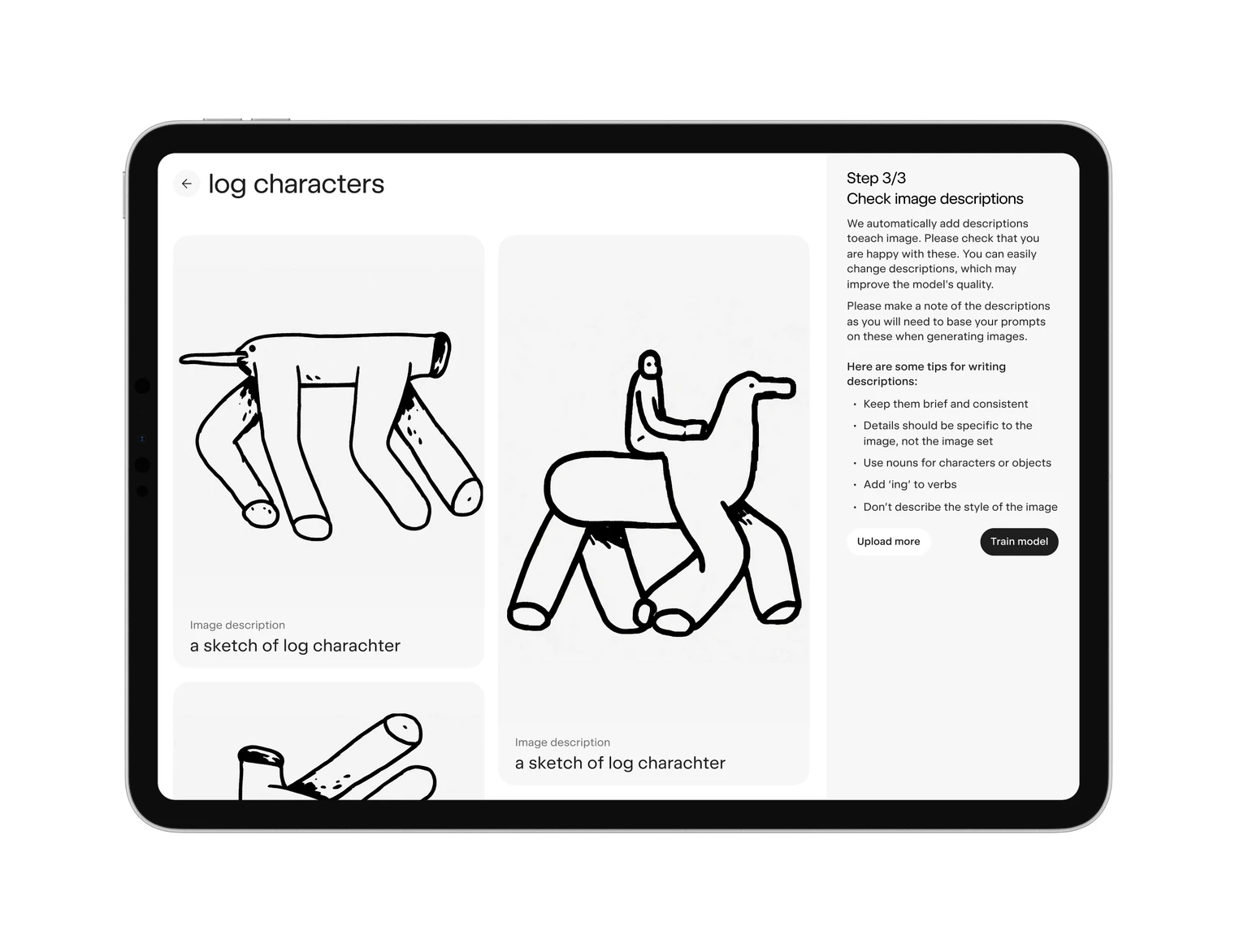
:quality(90):gifv()/uploads/72ec62fa-6da7-40b9-a96a-257f6a6c1ba6.jpg)
5. The prompt '3D render' didn’t work for them, but when I tried 'product photo of sculpture made of sausages' the result was amazing. The plasticity of my drawing was subtly echoed in the sausages.

:quality(90):gifv()/uploads/47b00d5f-49e4-4590-9a27-d5cf4f7742a5.jpg)
:quality(90):gifv()/uploads/fad42165-86cc-4652-8720-622a8934bcbb.jpg)
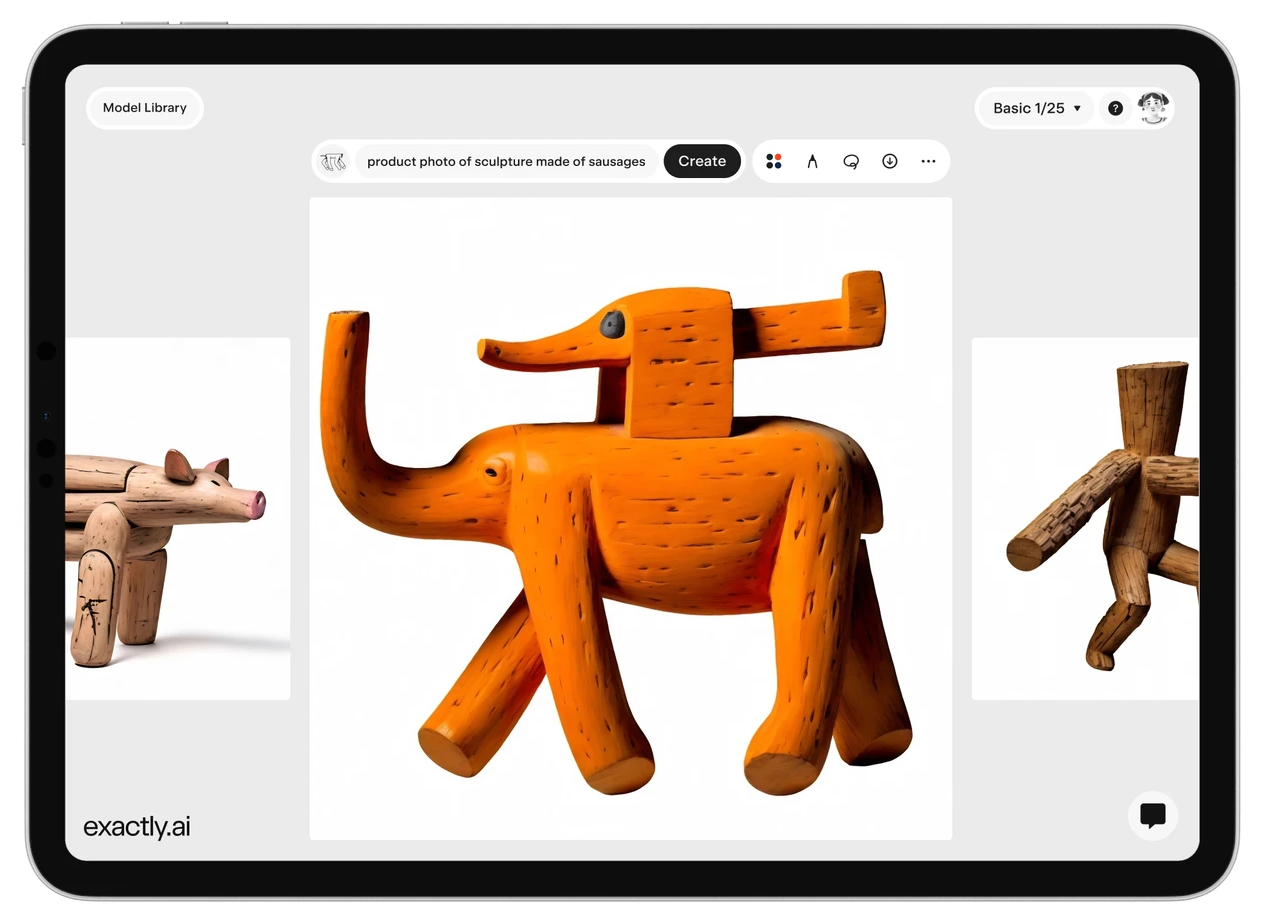
6. Here's another model where I made ceramic figurines based on my drawings.

:quality(90):gifv()/uploads/bf5791fe-444d-4463-abe0-8d759818a72b.jpg)
:quality(90):gifv()/uploads/961988dd-bb61-421d-866d-ee8be69b9f03.jpg)
7. I trained a final model using the classic Soviet propaganda cartoons "Kukryniksy". Which consist of complex metaphors, metamorphoses, and dynamic poses. I loved that exactly.ai recognised the era of the illustrations, and matched the photos of the sculptures to that time.
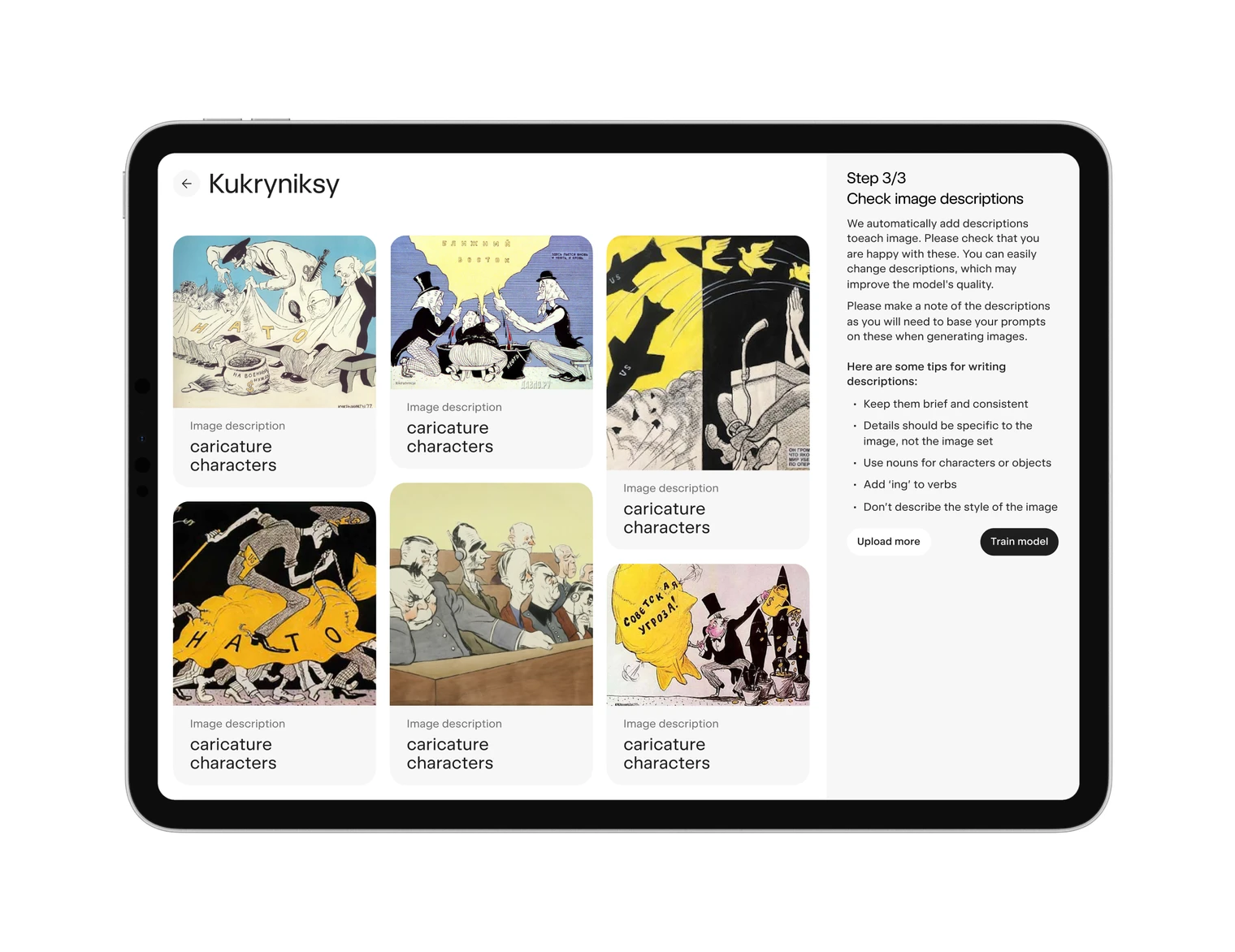
I haven't seen anyone else use this method of converting 2D into 3D in AI, and I'm very curious to see how it works on other models. Try to do the same and show what comes out of it.
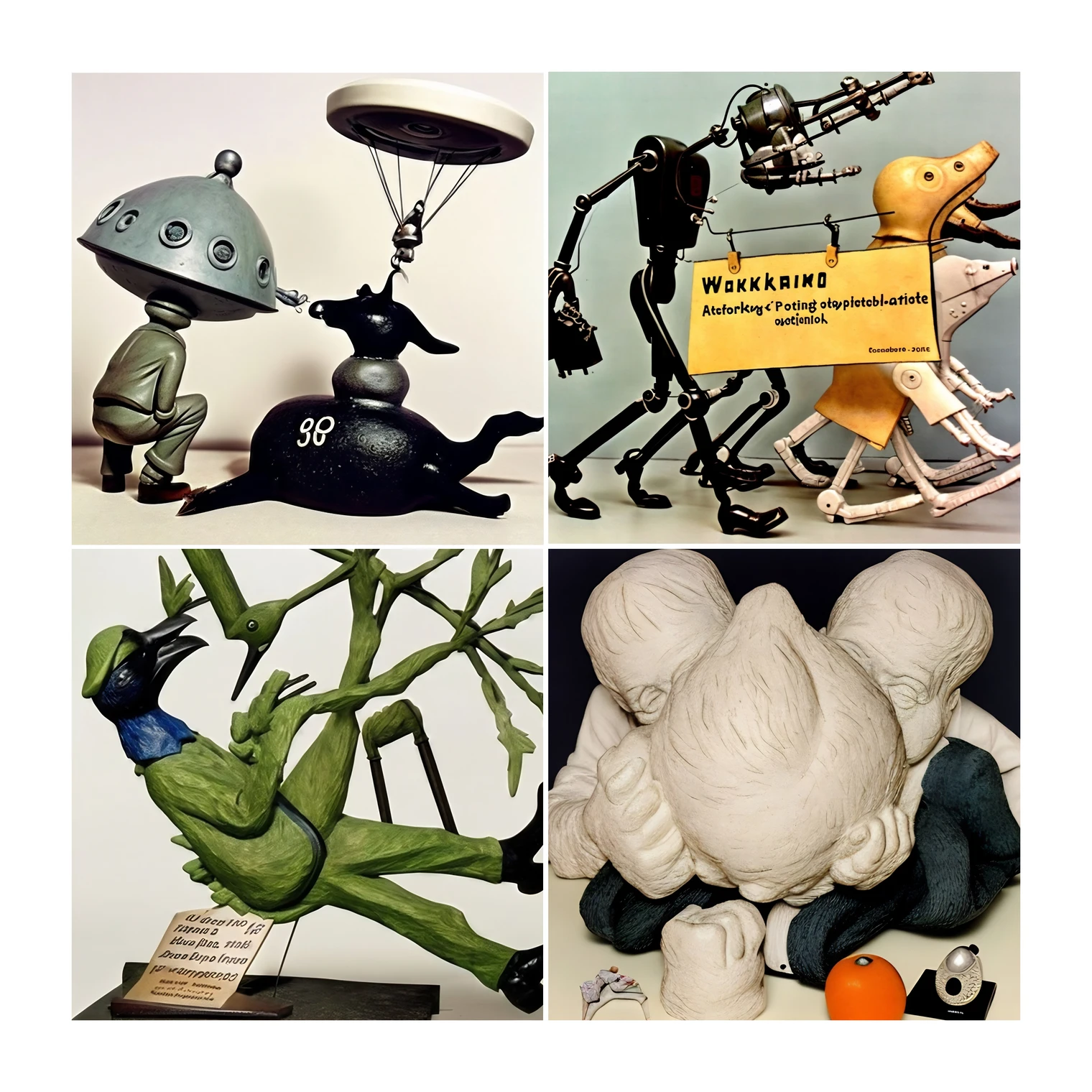
By perfecting your prompts and training models on the successful outputs, you can experiment with depth and dimension too. Start with something simple and try it out for yourself.








